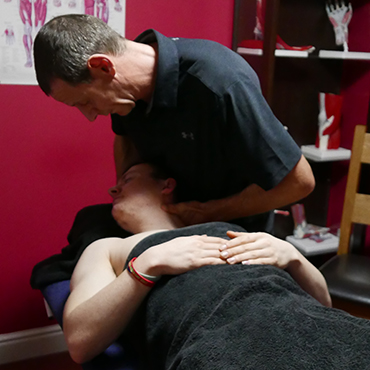What to Expect
What to expect
- Here’s what you can expect from your first visit:
- Initially I will get you to fill in a form with a few details about yourself and including medical history over the past 12 months or relating to your current condition. There is also a tick box on a few issues that may give contraindications to treatment. All this information is held in strict confidence
I will then be asking several questions relating to your reason for the consultation and treatment. This can also highlight previous injuries or lifestyle factors (including hobbies and pastimes) which will help give me a better understanding of the underlying issues/contributing factors and help me form a more effective treatment.
Following this, a general assessment will be performed along with checking your Range Of Movement (ROM) and other special tests in and around the affected area. This will enable me to come up with the treatment plan which will be explained to you before getting you on the Medical Plinth (multi adjustable massage table) and also to answer any questions you may have
This will enable me to come up with the treatment plan which will be explained to you before getting you on the Medical Plinth (multi adjustable massage table) and answer any questions you may have. - What to wear?
- I can work through clothes but it is much more beneficial to your treatment for me to work directly on the muscle groups involved in the treatment plan. Underwear is fine or you may prefer to wear a bikini top and shorts loose enough to allow full access to your leg muscles. You will be covered with towels from the onset with just the area I am working on being exposed.
- What else do you need to know?
- Some treatments call for a fair amount of pressure to get into the deeper tissues and this may cause some discomfort. I always aim to work within your pain tolerance and will ask you if the pressure is ok especially when using friction on scar tissue or employing Neuromuscular techniques.
Generally the treatment will end with some Soft Tissue Release (STR) or Muscle Energy Technique (MET) to improve the ROM in the area worked on followed by a review of where you were when we started and the result from the treatment.
You will then be given some post treatment advice which may include stretches and exercises to help your rehabilitation.
Main skills and techniques used.
SOFT TISSUE THERAPY
SOFT TISSUE THERAPY (More than ‘just’ sport and remedial massage)
During the treatment, I will use a number of posters and muscle models to explain your problem, why it has happened and what I’m doing to fix it. This empowers you to visualise the problem, see how the therapy will help and also understand how certain stretches and exercises will not only help fix the problem, but also prevent it happening again. If after the initial assessment I feel your problems are not caused by a soft tissue imbalance, I will refer you to the relevant health practitioner who will be able to give you the correct treatment.
Manipulative Therapy - High Velocity Low Amplitude thrust (HVLA)
The Qualification in Manipulative Therapy enables me to support my existing manual therapy skills and thus broaden the scope of my work and who I can help treat.
It is the safe application of specific technique procedures for the musculoskeletal system using high velocity low amplitude thrust (HVLA), articulation and soft tissue technique that utilize procedures that may benefit my patients and speed up their recovery.





